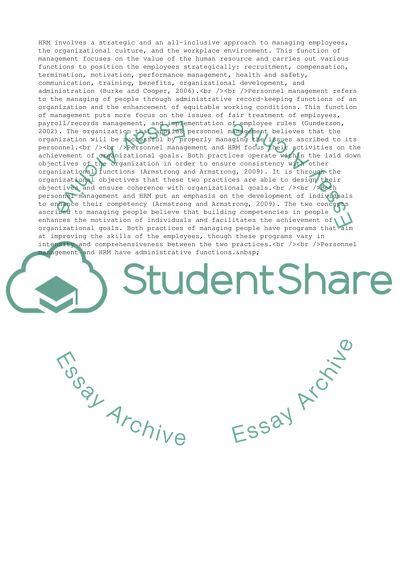Cite this document
(Concepts and Practices of Traditional Personnel Management with Coursework Example | Topics and Well Written Essays - 1750 words, n.d.)
Concepts and Practices of Traditional Personnel Management with Coursework Example | Topics and Well Written Essays - 1750 words. https://studentshare.org/management/1843601-compare-and-contrast-the-concepts-and-practices-of-traditional-personnel-management-with-contemporary-forms-of-people-management-ie-human-resource-management
Concepts and Practices of Traditional Personnel Management with Coursework Example | Topics and Well Written Essays - 1750 words. https://studentshare.org/management/1843601-compare-and-contrast-the-concepts-and-practices-of-traditional-personnel-management-with-contemporary-forms-of-people-management-ie-human-resource-management
(Concepts and Practices of Traditional Personnel Management With Coursework Example | Topics and Well Written Essays - 1750 Words)
Concepts and Practices of Traditional Personnel Management With Coursework Example | Topics and Well Written Essays - 1750 Words. https://studentshare.org/management/1843601-compare-and-contrast-the-concepts-and-practices-of-traditional-personnel-management-with-contemporary-forms-of-people-management-ie-human-resource-management.
Concepts and Practices of Traditional Personnel Management With Coursework Example | Topics and Well Written Essays - 1750 Words. https://studentshare.org/management/1843601-compare-and-contrast-the-concepts-and-practices-of-traditional-personnel-management-with-contemporary-forms-of-people-management-ie-human-resource-management.
“Concepts and Practices of Traditional Personnel Management With Coursework Example | Topics and Well Written Essays - 1750 Words”. https://studentshare.org/management/1843601-compare-and-contrast-the-concepts-and-practices-of-traditional-personnel-management-with-contemporary-forms-of-people-management-ie-human-resource-management.


